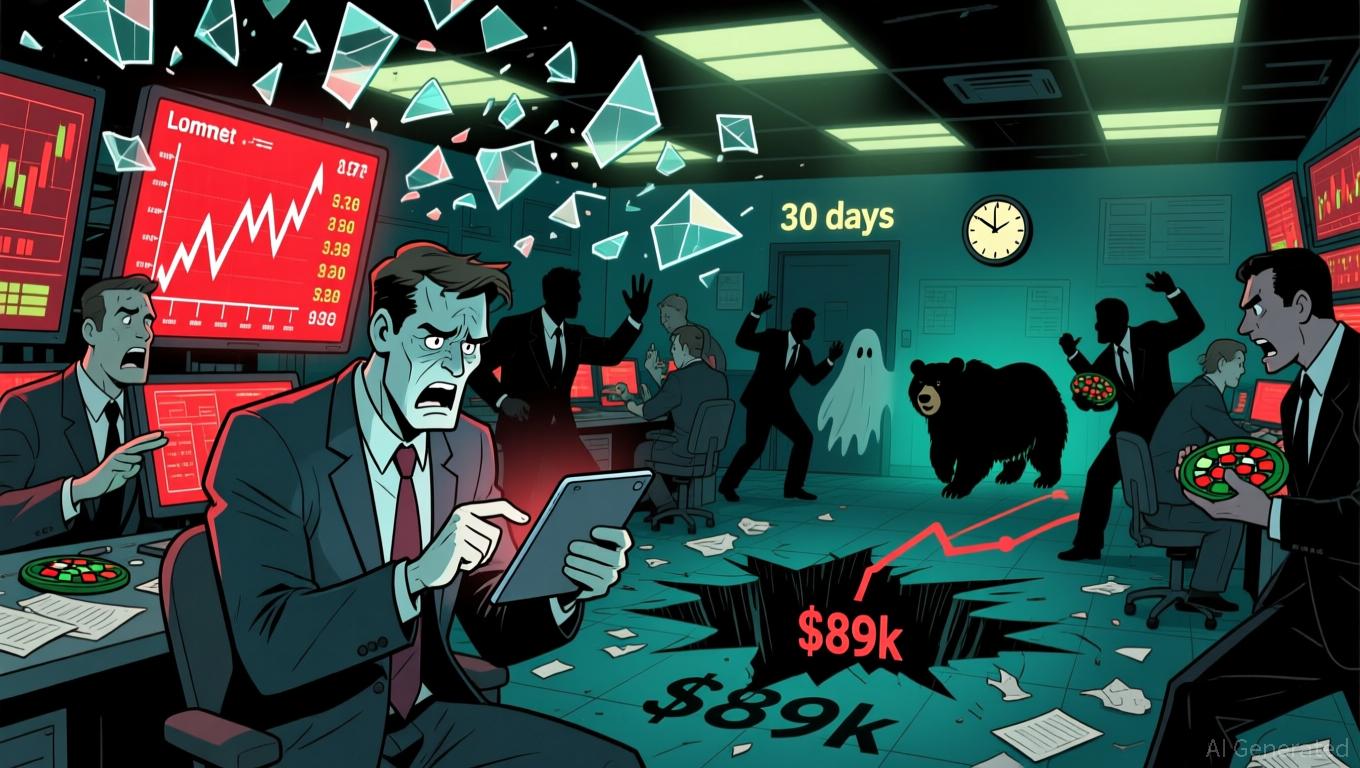The Underlying Cause of the Latest BTC Plunge: Changes in Regulations or Shifting Market Mood?
- The 2025 Bitcoin crash erased $1 trillion in value, driven by global regulatory fragmentation, geopolitical risks, and institutional caution. - Divergent policies (U.S. deregulation vs. EU MiCA) and geopolitical tensions increased compliance costs, destabilizing cross-border crypto operations. - Institutional investors adopted cautious financing while selectively buying undervalued assets, exposing market duality between short-term panic and long-term optimism. - Regulatory uncertainty amplified market s
Regulatory Shifts: An Inconsistent Global Approach
The 2025 Bitcoin downturn occurred amid a patchwork of regulatory approaches across the globe.

Geopolitical Risks: Division and Rising Costs
Geopolitical strife further aggravated the situation. While no single incident directly caused the crash, the uneven enforcement of Bitcoin regulations across different areas increased operational hazards. For instance,
In this way, geopolitical dynamics magnified the effects of regulatory changes. As nations focused on their own economic interests, the absence of a unified system forced investors to navigate a complex web of compliance obstacles.
Institutional Investor Behavior: Prudence and Targeted Optimism
Institutions, often viewed as stabilizing forces during market turmoil, took a two-pronged approach during the 2025 crisis. On one side,
Significantly,
Market Sentiment: A Cycle of Self-Reinforcement?
The interaction between regulatory doubts and institutional strategies created a reinforcing cycle. As
Yet, the crash also highlighted the persistence of long-term investors.
Conclusion: Multiple Forces at Play
No single factor can fully explain the 2025 Bitcoin crash. Regulatory changes and geopolitical divisions undermined market stability, while institutional responses—from conservative financing to selective investment—intensified the decline. Still, the evidence points to regulatory unpredictability as a key driver of market mood. As policymakers continue to adjust their approaches, the road to recovery will hinge on finding the right balance between fostering innovation and ensuring stability.
At present, investors must contend with a landscape shaped by both geopolitical uncertainty and institutional restraint, which will continue to influence Bitcoin’s volatility going forward.
Disclaimer: The content of this article solely reflects the author's opinion and does not represent the platform in any capacity. This article is not intended to serve as a reference for making investment decisions.
You may also like
Turning Time Into Computing Power: Redefining the Value of Consumption and Participation

Bitcoin Updates Today: Despite Bitcoin’s Drop, Positive Indicators Emerge—Could a Recovery Be Near?
- Bitcoin fell to $82,000, but a hidden bullish divergence on weekly charts suggests easing selling pressure and potential rebound. - Institutional outflows ($1.45B in ETFs) and surging on-chain losses ($523M/day) highlight deteriorating market conditions and panic selling. - Mid-sized investors (100-1,000 BTC) are accumulating while whales (1,000-10,000 BTC) distribute, signaling supply redistribution. - Key support at $80,000 and $85,389 could trigger stabilization, but sustained buying from institutions

XRP News Update: XRP ETFs See Significant Growth as Token Drops 32%—A Dilemma for Investors
- XRP ETFs surged with $164M net inflows on Nov 24, outpacing BTC/ETH/SOL funds despite broader crypto redemptions. - Franklin Templeton's XRPZ and Grayscale's GXRP led inflows, highlighting institutional demand for XRP's cross-border payment utility. - XRP ETFs accumulated $586.8M in cumulative inflows since launch, contrasting BTC ETFs' $151.1M outflows on same day. - XRP token fell 32.5% in a month despite ETF success, revealing market complexity where inflows don't correlate with token prices. - Regula

CFTC's Newly Formed Council Addresses the Challenge of Balancing Crypto Innovation and Regulatory Oversight
- CFTC launches "CEO Innovation Council" to collaborate with crypto leaders on responsible digital commodity regulations. - Agency advances spot trading plans and engages exchanges like Coinbase to clarify leverage rules amid stalled legislative updates. - Polymarket's U.S. re-entry with $1B+ weekly volumes highlights CFTC's balanced approach to innovation and compliance oversight. - Bipartisan Senate draft seeks expanded CFTC authority over spot trading while addressing resource gaps for regulatory enforc
